1) Institution: the impact of Google on the newspaper industry
2) Audience and Institution: how news consumption has changed
3) The future of newspapers: Build The Wall analysis
4) The decline of newspapers: the effect of online technology
5) Citizen journalism: Media Magazine article and questions
6) News Values: theory and updating them for digital media landcape
7) Marxism & Pluralism: Media Magazine article and questions
8) Media Conference: notes from speakers
9) Marxism and Pluralism: views and values question
10) NDM Section B essay on blog - consumption and production question
11) Marxism and Pluralism: Alain de Botton on the news - lecture and questions
12) Globalisation: questions and blog task
13) Globalisation: Media Magazine - Google Glass, techno-panics and data mining
14) News on the Tweet report and questions
15) Audience and Institution article and questions
16) Institution case study: NDM and News Corporation
Monday 21 December 2015
Friday 11 December 2015
NDM institution case study: News Corporation
1) Research News Corporation’s response to the growth of new and digital media by listing each of the institution’s brands (Sky News, Times etc.) Have any closed, changed or been in the news in the last 10 years for any reason?
2) Develop examples of the impact that new and digital media has had on News Corp’s brands (paywalls, readership figures, audience share etc.)
3) Use what you have found out about News Corp to answer the following question:
Why and with what success are traditional media institutions adapting to the challenge posed by new/digital media?
New and digital media is now the dominant and most popular platform, traditional media institutions are being forced to adapt. It's notable that traditional media institutions are generating less profit as citizen journalism helps spread news on social media sites like Twitter and Facebook Also, many people get news through "word of mouth" which evidently shows how traditional institutions, like The Sun, are losing readers which ultimately prompted them to put up a paywall to gains some income.
To conclude, news institutions are not adapting to the challenge introduced by new and digital media very well because it is not the change in platform that is necessarily the problem. The accessibility of free news on websites such as the BBC is responsible for the decline in newswpapers, even if they make the switch to new and digital media proven by the Sun still making losses despite 250,000 subscribers.
- The Sun
- The Times
- Sunday Times
- Fox Entertainment
- News International
2) Develop examples of the impact that new and digital media has had on News Corp’s brands (paywalls, readership figures, audience share etc.)
New and digital media has negatively impacted all of Newscorps brands. Online news is more accessible and this had resulted in the decline of the newspaper industry. For instance, broadsheets such as The Sun have made a loss. The Sun is behind a paywall in an attempt to regain revenue through online subscriptions, however even The Sun's 225,000 subscriptions can not make up for the decline in broadsheet sales.
Why and with what success are traditional media institutions adapting to the challenge posed by new/digital media?
New and digital media is now the dominant and most popular platform, traditional media institutions are being forced to adapt. It's notable that traditional media institutions are generating less profit as citizen journalism helps spread news on social media sites like Twitter and Facebook Also, many people get news through "word of mouth" which evidently shows how traditional institutions, like The Sun, are losing readers which ultimately prompted them to put up a paywall to gains some income.
To conclude, news institutions are not adapting to the challenge introduced by new and digital media very well because it is not the change in platform that is necessarily the problem. The accessibility of free news on websites such as the BBC is responsible for the decline in newswpapers, even if they make the switch to new and digital media proven by the Sun still making losses despite 250,000 subscribers.
NDM: The key concepts of audience and institution
1) What was the relationship between audience and institution in the pre-digital age?
The two concepts are inseparably connected. While their business models and products might differ, all institutions need audiences if they are to generate profit.But whilst every institution needs an audience, contemporary audiences are increasingly able to access media in ways which bypass traditional media institutions.
2) The article gives a lot of examples of major media institutions. Choose three examples from the article and summarise what the writer is saying about each of them.
ITV - relies on income generated by advertisers. This means that appeal to a large audience are seen as more valuable than ones with smaller niche audiences
Sky One - needs an income from subscribers and may well invest in programming that attracts a loyal audience, who are more likely to invest in a long term subscription to guarantee early access to the shows they enjoy.
The MailOnline - receives more income the longer a reader stays on the site, so stories will feature lots of images and videos, and sensationalised or controversial
3) The article ends with a section on the digital age
In today's society, audiences now have more freedom to access media products when they choose, rather than when they are told. Mobile technology allows audiences to carry TV programmes, films, music and all that is on offer on the internet on tablets and smartphones. Modern audiences now expect to be able to communicate directly with institutions, and to be able to construct their own media products for themselves. The ability to download and/or stream films and music on demand has led to a change of attitudes regarding media products; contemporary audiences do not see them as having much monetary value, since they are so widely and freely available.
4) How do YOU see the relationship between audience and institution in the future? Will audiences gain increasing power or will the major global media institutions hold sway?
An institution’s economic success is still dependent on the behaviour and preferences of the audience; but traditional media institutions do not always respond quickly to change. I believe audiences will have more increasing power over the next few years, however major global media institutions will always be the main forefront as audiences use those institutions to conform whether news is accurate or not.
The two concepts are inseparably connected. While their business models and products might differ, all institutions need audiences if they are to generate profit.But whilst every institution needs an audience, contemporary audiences are increasingly able to access media in ways which bypass traditional media institutions.
2) The article gives a lot of examples of major media institutions. Choose three examples from the article and summarise what the writer is saying about each of them.
ITV - relies on income generated by advertisers. This means that appeal to a large audience are seen as more valuable than ones with smaller niche audiences
Sky One - needs an income from subscribers and may well invest in programming that attracts a loyal audience, who are more likely to invest in a long term subscription to guarantee early access to the shows they enjoy.
The MailOnline - receives more income the longer a reader stays on the site, so stories will feature lots of images and videos, and sensationalised or controversial
3) The article ends with a section on the digital age
In today's society, audiences now have more freedom to access media products when they choose, rather than when they are told. Mobile technology allows audiences to carry TV programmes, films, music and all that is on offer on the internet on tablets and smartphones. Modern audiences now expect to be able to communicate directly with institutions, and to be able to construct their own media products for themselves. The ability to download and/or stream films and music on demand has led to a change of attitudes regarding media products; contemporary audiences do not see them as having much monetary value, since they are so widely and freely available.
4) How do YOU see the relationship between audience and institution in the future? Will audiences gain increasing power or will the major global media institutions hold sway?
An institution’s economic success is still dependent on the behaviour and preferences of the audience; but traditional media institutions do not always respond quickly to change. I believe audiences will have more increasing power over the next few years, however major global media institutions will always be the main forefront as audiences use those institutions to conform whether news is accurate or not.
Monday 7 December 2015
NDM case study: News on the Tweet
Why are respected news brands good news for Twitter?
Why in turn is Twitter good for respected news brands?
The report suggests that old and new media “are not, in fact, in direct competition, but often work extremely well together to enhance both the media eco-system and the consumer experience”. What evidence do they provide to support this idea? Do you agree with it?
On page 24/25 of the report, the focus turns to 'gossip' or 'banter'. What example tweets from journalists are used to illustrate this?
What does the report say about trust in Twitter and journalists (look at pages 34-39)?
Finally, do you think new and digital media developments such as Twitter have had a positive or negative impact on traditional newspapers?
Respected news brand help to drive Twitter activity; an estimated four in 10 agree they
check Twitter frequently to
see what is going on with their
favourite newspaper brands. This is what helps make
newsbrand followers
such a valuable
audience
for Twitter.
They are three
times more likely
to retweet than
non-followers; four
times more likely to post
links to articles and three times
more likely to tweet about
trending news topics. They are
also far more likely to share
their thoughts and reply to
opinion about the news.
Naturally, this means that
newsbrand followers
visit Twitter more
often - they are 60%
more likely to visit
on a daily basis than
non-followers and more
than twice as likely to post
on a daily basis. Of course, this
provides excellent promotion
for the newspaper brands,
driving readership to both
online and print.
Why in turn is Twitter good for respected news brands?
Twitter is helping to make newsbrands more accessible, more influential and more connected than ever before. The immediacy and accessibility of Twitter brings valuable readers to newspaper brands that they would not normally read in print or directly online.
The report suggests that old and new media “are not, in fact, in direct competition, but often work extremely well together to enhance both the media eco-system and the consumer experience”. What evidence do they provide to support this idea? Do you agree with it?
Legacy media is not in
direct competition, but often
works extremely well together with new media to
enhance both the media
eco-system and the
consumer experience.
In the case of Twitter
and newspaper brands,
enhancement takes place
in four different ways to help benefit the audience: knowledge, opinion, gossip and banter.
On page 24/25 of the report, the focus turns to 'gossip' or 'banter'. What example tweets from journalists are used to illustrate this?
- Benedict Brogan @benedictbrogan • Jan 10 I’ve interviewed Nigel Farage. Dave won’t like it, obvs. But neither will @Ed_Miliband. Not at all. Will post link when I’ve found it
This is an example of banter as Brogan uses slang.
Do you think the increasing amount of 'gossip' or 'banter' is harming the reputation of news and journalists?
Gossip and banter about celebrities, sports or political scandals are all part of the entertainment and are often turned to when newsbrand followers want to relax. They are looking for both humour as well as ‘backstage access’ into the lives of the people and things they are interested in. Newsbrands are responsible for some of the most popular individual tweeters. Individual journalists are key contributors to the humorous content on Twitter. Also, the audience can relate to journalists on a personal level as banter helps to create a more lively outlook.
Finally, do you think new and digital media developments such as Twitter have had a positive or negative impact on traditional newspapers?
Almost half of all Twitter
users, and almost two thirds
of newsbrand users, say it is
important that news on Twitter
is verified by a respected brand.
This helps build trust in the content. The journalists themselves are
frequently used as a source
of breaking news, often being
the first source of relevant
stories for their follower; they are also trusted to have
an insider view that is more
informed than that of casual
commentators and are felt to
be less constrained in how they
communicate their opinions.
They are also regularly lauded for
their witty and humorous insights.
Overall, new and digital developments have an equal balance of both positive and negative impacts. This is clearly evident as Twitter has helped attract a variety of audiences to traditional newspapers online, this is done through click-bait tweets. Ultimately, this drives Twitter users to look at online newspapers, helping brands such as the BBC to generate sufficient revenue. However, the root of the issue derives from the fact that audiences are not buying print media as much, as it usually tends to be the older generation who appreciate traditional media more than the younger generation. The reason for this is because most of the younger generation, who are most likely to have Twitter, can read content online from verified newspaper accounts which tweet all of their articles; this is a quicker and more accessible. From my perspective, verified Twitter accounts are seen to supply accurate news, so it would be pointless to buy a newspaper. This has a negative impact on the traditional newspapers as they are making less profit because all of the content is available online. The issue for analysis is that it's the traditonal newspaper brands are in fact the one which provide an
authoritative viewpoint and offer
verified news in a user generated
content world.
Sunday 6 December 2015
Weekly New/Digital Media homework Week 13
WEEK 13
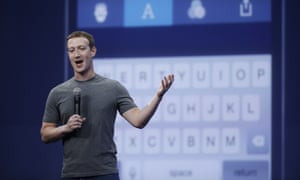
- Facebook founder’s extraordinary year propels him to top spot of list that has highest proportion of women in its 15-year history
- Mark Zuckerberg has returned to the top of the Guardian’s annual power list, the MediaGuardian 100, after a year in which Facebook, the social network he founded, was used by 1 billion people in a single day.
- Facebook’s reach – Zuckerberg trumpeted the fact that one in seven people on Earth used the social network in August – pushed its founder above last year’s winner, Google’s Larry Page, for the first time since 2011.
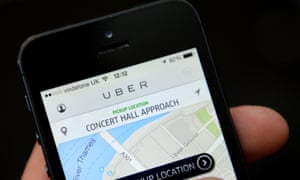
- Union representative says drivers are concerned about safety of UberPool and how revenue will be shared
- Uber faces a union-backed protest against its decision to make it compulsory for its London drivers to offer a new minicab sharing service
- GMB, the union for Uber drivers, has written to the company calling on it to reverse a decision not to allow drivers to opt out of the UberPool car-sharing service, which launched in London on Friday. Uber says the new scheme will help cut congestion and bring down the cost of travel for passengers.
- James Farrar, the GMB union representative for Uber drivers, claimed that they had expressed safety concerns and had also not been fully informed of how fares and revenue share with the company would work. He said: “Many members have expressed deep concern about the planned introduction of UberPool.
Friday 4 December 2015
Globalisation and the media: wider issues
1) Why was
Google Glass controversial?
Google
glass created a moral panic as consumers saw it as a threat that the Glass
may encourage people to become "less engaged" in conversations with
each other, because of the uncertainty that the person you’re talking to is
actually paying attention to you and is’t preoccupied with surfing the net.
2) What are the positive elements to Globalisation that the article highlights?
The world
becomes more accessible, and people are enriched by getting to know and
understand it better. Increased choice and opportunities empower people, while
access to information can enhance not only the ability to make informed
decisions but even the democratic process.
3) What are potential negatives to Globalisation?
In terms of
ownership: smaller companies have no hope of staking a claim on the global
market as they won’t be able to compete.
4) What is a techno-panic? How does it link to moral panics?
A techno-panic is a type of moral panic that centres on fears
regarding specific contemporary technology or technological activity. Moral
panics are often related to a change that some have viewed as a threat to the
rest of us as a whole. Often the threat is exaggerated, and done with the
intent of selling newspapers or other similar media texts. They both link
together in this case as it demonstrates how the Google Glass may encourage
people to become less engaged in conversations with each other.
5) What is your opinion on the privacy debate and major corporations being able to access large quantities of personal data?
In my opinion, having institutions being able to have access
to personal data is daunting as some people prefer to lead private lifestyles.
With the Google Glass the feature of facial recognition software – meaning that
individuals could be picked out from a crowd of faces with ease, shows how
people will become more recognised and known to corporations. I believe people
should be entitled to their own privacy, however the changes in technology show
how data is more accessible.
Learner Response
The development of new/digital media means the audience is more powerful in terms of consumption and production. Discuss the arguments for and against this view.
Introduction:
Re-write your introduction working on answering the
question from both sides and clearly introducing your News case study. Then,
write a new paragraph answering the question clearly with regards to the
decline in the newspaper industry.
Many would agree that advances in technology allow audiences
to feel empowered, especially in an era known as the “information revolution”
whereby audiences have strong opinions of news and can express that freely on
social media sites. The decline in newspapers means the new and digital media
for news is used more efficiently from smartphones because of the quick and
easy access, ultimately this allows audiences to feel empowered as they can
publish a discussion on news at any point in time. The theories of Marxism and
Pluralism are vital in differentiating how exactly powerful audiences are with
the audiences in new and digital media, as it demonstrates a clear contrast in
power between the elite and how society influences the media through freedom of
speech.
The newspaper industry has shown a sufficient decline, as statistics
show how The Sun went from generating 2.2 million copies a day to now 1.8
million. The explanation for this decline is simply because newspapers publish
articles online, considering the fact most people have access to the internet
from their phones making it quicker and
easier to access news online rather than going out to a shop to buy a paper
copy. Furthermore, this emphasises how audiences are more empowered by
technology as they have no limitations of access to gaining news online and
ultimately save money. In the most recent years, Rupert Murdoch decided to put
a paywall up for The Sun Online, the number of visitors to thesun.co.uk fell
61.4 per cent from 37.3 million in July – the last month before the paywall
went up – to 14.4 million in August. Ultimately, it’s evident that users went
to competitors such as the Mail Online to gain news, which helps the competing
newspapers have a sense of empowerment to a short extent. Although the standard of news may not be of high quality, having news quickly, which links to immediacy (news values) it was attracts audiences. It is prominent that
audiences are empowered in terms of consuming news as they can get it for free,
which makes established newspapers such as The Sun to lose revenues and
customers because putting up a paywall drives people away to free resources
which are easily available.
Thursday 3 December 2015
Weekly New/Digital Media homework Week 12
WEEK 12

- The Sun is facing a backlash against its front-page report of an opinion poll purporting to show that one in five British Muslims had “sympathy for jihadis”, with more than 1,200 complaints made to the press regulator.
- The Independent Press Standards Organisation (Ipso) said it had received more than 1,200 complaints about the front page by 1pm on Tuesday
- Less than 48 hours after publication, the complaints dwarfed those made against a column by Katie Hopkins comparing migrants to cockroaches, which received 400 complaints over several weeks.
- Humza Yousaf, a minister in the Scottish government, said the article was “inflammatory, flawed and puts Muslims at risk of further abuse”.
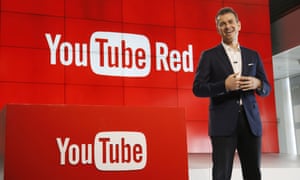
- Report claims online video service is set to negotiate with Hollywood studios and TV firms to help YouTube Red compete with Netflix, Hulu and Amazon
- YouTube is preparing to strike deals with Hollywood studios and television firms to bring films and TV shows to its YouTube Red subscription service.
- The online video service is keen for its $9.99-a-month service to compete more directly with rivals such as Netflix, Amazon and Hulu, according to the Wall Street Journal.
- YouTube is not the only tech giant hoping to strike streaming licensing deals with the TV and film industries for 2016, however. Apple is thought to be working on its own streaming video service to run across its iOS and Apple TV devices, with one report in March suggesting it was planning to charge US viewers $30-$40 a month for a package of 25 channels.
Monday 23 November 2015
NDM case study: Globalisation
Is our news influenced by American cultural imperialism? What examples can you think of?
Our news isn't influenced by American culture imperialism because American news is simply news for entertainment. It's more prominent for publishing stories on Hollywood culture and from a British perspective this is not valued. British news institutions do publish some articles associated with celebrities but primarily all the news is focussed on war and politics.
Has the increased globalisation of news improved the audience experience? How? Why?
Yes, this is because everyone can share the same experience of news at the same time, through live pictures and streaming which could be from the other side of the world. This increases audiences enjoyment. However, the globalisation of news has affected small institutions; for example the Ealing Gazette isn't valued as big media giants have dominated, which leaves local newspapers to produce poor quality news, despite producing loads of articles.
Has globalisation benefited or damaged major news institutions? How? Why?
Globalisation has benefited major institutions as consumers don't have to physically buy newspapers, as newspaper websites online provide immediate consumption, such as the Mail Online. Also, institutions save money as loads of journalists aren't required as citizen journalism derives the content published online by big institutions. However, the downside is that it is hard to verify news from citizen journalism as it may not be completely accurate.
Also, smaller news institutions are destroyed through the advances in technology, which mean audiences use social media sites to access news, such as Twitter and Facebook. Also,globalisation can be damaging for smaller news institutions, which produce local papers. For instance, take the Ealing Gazette, which is owned by Trinity Mirror, the largest British newspaper, which is currently suffering against other media institutions, such as BBC.
Our news isn't influenced by American culture imperialism because American news is simply news for entertainment. It's more prominent for publishing stories on Hollywood culture and from a British perspective this is not valued. British news institutions do publish some articles associated with celebrities but primarily all the news is focussed on war and politics.
Has the increased globalisation of news improved the audience experience? How? Why?
Yes, this is because everyone can share the same experience of news at the same time, through live pictures and streaming which could be from the other side of the world. This increases audiences enjoyment. However, the globalisation of news has affected small institutions; for example the Ealing Gazette isn't valued as big media giants have dominated, which leaves local newspapers to produce poor quality news, despite producing loads of articles.
Has globalisation benefited or damaged major news institutions? How? Why?
Globalisation has benefited major institutions as consumers don't have to physically buy newspapers, as newspaper websites online provide immediate consumption, such as the Mail Online. Also, institutions save money as loads of journalists aren't required as citizen journalism derives the content published online by big institutions. However, the downside is that it is hard to verify news from citizen journalism as it may not be completely accurate.
Also, smaller news institutions are destroyed through the advances in technology, which mean audiences use social media sites to access news, such as Twitter and Facebook. Also,globalisation can be damaging for smaller news institutions, which produce local papers. For instance, take the Ealing Gazette, which is owned by Trinity Mirror, the largest British newspaper, which is currently suffering against other media institutions, such as BBC.
Saturday 21 November 2015
Weekly New/Digital Media homework Week 11
WEEK 11
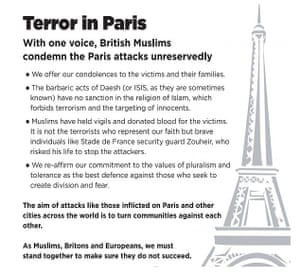
- Council places advert in Daily Telegraph and Mail Online condemning the terrorist attacks ‘unreservedly’
- Hundreds of British Muslims have taken out an advert to highlight their “united condemnation” of terrorism after the attacks in Paris.
- The advert, issued by the Muslim Council of Britain (MCB) and endorsed by more than 300 of the body’s affiliates, features an image of the Eiffel Tower
- Harun Khan, deputy secretary general of the MCB, said: “The reaction has been hugely positive. Others have picked up on the hard copy and have re-circulated it. It has been a really good message to us.
- The advert was also a reaction to examples of anti-Muslim behaviour which have surfaced since the attacks. On Monday, a 43-year-old woman was arrested by Thames Valley police after she wrote on Facebook that Muslims were no longer welcome in a beauty salon.

- Spotify is to offer staff up to six months’ parental leave with 100% pay as part of a global policy it says recognises the importance of “a healthy work-family balance”.
- The Swedish company, which launched its music streaming service in 2008 and now has 75 million users, will backdate the policy so that every one of its 1,600 worldwide employees with a child born after 1 January 2013 will be eligible.
- The promise to pay 100% pay for six months is a huge step up from the legal requirement on UK companies. Legislation introduced in April allows parents in the UK to enjoy shared leave for up to 50 weeks but only 39 weeks are paid. Firms are required to pay 90% of a worker’s average weekly earnings before tax for the first six weeks only, then a minimum of £139.58 for the next 33 weeks.
- Spotify said it will guarantee a “retaliation-free environment” to ensure parents take time off without negative consequences at work. It said generous parental leave only works if there is a culture in which employees are encouraged to take time off.
The development of new/digital media means the audience is more powerful in terms of consumption and production. Discuss the arguments for and against this view.
The development of new/digital media means the audience is more powerful in terms of consumption and production. Discuss the arguments for and against this view.
Many would agree that advances in technology allow audiences to feel empowered, especially in an era known as the “information revolution” whereby audiences have strong opinions of news and can express that freely on social media sites. The theories of Marxism and Pluralism are vital in differentiating how exactly powerful audiences are with the audiences in new and digital media, as it demonstrates a clear contrast in power between the elite and how society influences the media through freedom of speech.
In my opinion, audiences are empowered by developments to new and digital media to a large extent as citizen journalism allows audiences to challenge those in power. This supports the idea of pluralism, with the media supporting the idea of audiences having freedom of speech as “the internet has given readers much more power” (Rupert Murdoch, Newscorp). For instance, CNN an American news channel has been portrayed negatively on social media because recently this year CNN and Facebook hosted the first 2016 Democratic Party presidential debate in Las Vegas, Nevada. CNN conducted an online poll asking viewers to select which of the participants they believed won the debate. Despite the fact that the poll ended with Bernie Sanders holding 75% of the vote, and Hillary Clinton holding 18% of the vote, CNN published several articles declaring Secretary Clinton as the winner of the debate. Users of Twitter were unhappy with CNN's dishonesty and stated how CNN purposely tried to "bury Bernie Sanders's victory in an effort to support Hillary Clinton." This created online debate and as a result CNN removed the poll from their website. The fact that social media influenced a big debate demonstrates how new and digital media has allowed audiences to be dominant. Ultimately, many users of Twitter expressed how CNN were fraudulent and this became a trending topic, following the hashtag #CNN in the United States for 24 hours. As a result, this leads to people becoming ‘opinion leaders’ on social media as their view may influence somebody else’s thinking if they are not already aware of the issue. Audiences have the freedom to challenge audiences and could be described as "rebellion is encapsulated in the internet" (Keen) and suggests how audiences do have the capabilities to challenge the elite.
Furthermore, the idea of pluralism allows audiences to choose what they can consume and allows them to engage with the news agenda. This is most apparent with the police brutality in America which encouraged the activist movement called “Black Lives Matter”. The movement began with the use of the hashtag, #BlackLivesMatter, on social media after the acquittal of George Zimmerman in the shooting death of African-American teen Trayvon Martin. Black Lives Matter became nationally recognized for its street demonstrations following the 2014 deaths of two African Americans: Michael Brown—that resulted in protests and unrest in Ferguson—and Eric Garner in New York City. Audiences are empowered by perspective and are able to challenge those in power, such as the police. As it was the audiences, in this case, who influenced the media to expose the “Black Lives Matter” campaign, it is notable that new and digital media allows audiences to “conform, accommodate, challenge or reject” (Gurevitch) to such views in society.
From a Marxist perspective, it is evident that within limited reason the elite allows audiences to be powerful. As mass media institutions have been recognised for having “a minority of (media) producers” which “serve a majority of consumers” (Pareto’s Law) this arguably demonstrates how audiences are limited in what they see as “freedom of speech” as websites, such as The Daily Mail are moderated regularly and can remove filter/remove any comment from their online website, which attracts 100 million users monthly. An example of this is the homophobic article written about the death of Stepthen Gately, produced by Jan Moir (The Daily Mail’s chief columnist). The article provoked much criticism on Twitter and Facebook and an opponent columnist Charlie Brooker, from The Guardian, described the article as "a gratuitous piece of gay-bashing" and urging readers to contact the Press Complaints Commission. As a result, the editorial direction of the gatekeepers controlling the newspaper did not change and this depicts audiences are trapped under hegemonic control and social media sites such as Twitter are just under the illusion of having freedom of speech.
Also, Marxists are in in control and this is clearly evident for online newspaper sites which moderate comments which people leave on each article. In further detail, if audiences express their opinions which are too far out of the mainstream, that comment can easily be removed. This proves how the elite have the power to remove comments online without hassle. For instance, if users use too much swearing in their comment this will automatically notify the website to remove the comment easily. Online moderation takes place in order for The Daily Mail to maintain their brand image and not have audiences thinking to negatively. In addition, social media sites such as Twitter can suspend users for example for being too sexist or homophobic to a large extent.
To conclude, anyone has the ability to express their opinion on social media there are limitations on what can be viewed to other users. It is noticed that audiences are heavily empowered by the developments in technology as social media helps to expose the opinions of the audience, this helps supports pluralism. Even though websites have some control over what comments can be shown, this control is minor as audiences have the ability to spark online debates which could impact those with high control, and this is most evident with the Black Lives Matter campaign. Overall, it is hard to avoid the conclusion that audiences are under hegemonic control, as Marxists have cleverly crafted an illusion of autonomy.
Marxism & Pluralism: Alain de Botton on the news
1) To what extent do you agree with Alain de Botton's views on the News?
I agree with the fact that the news is narrow-minded and any news which is outside of the mainstream is automatically sidelined. The news is concerned with giving us "hard facts" and that is the role of the news. However, Alain de Botton states how audiences are just concerned with the facts and fail to care about making an actual change. There is a distinction between news which is important and news which is popular, with the advances in technology the nature of news has completely changed. News is seen to build a sense of community and watching news is seen as "critical appreciation."
2) How can you link Marxism and Hegemony to de Botton's criticisms of the News?
Botton states how the news is there most of the time to "scare us" as the elite make the stories appear this way. Anyone who is seen as an extremist is immediately sidelined and this links to hegemony because audiences will be attracted to what is common sense, not extremist views. New induces terror, stories about breakouts of illnesses or murderers make people live in fear and news headlines are there to distort society. We interpret the anomalous to be normal.
3) How could you use Pluralism and new technology to challenge de Botton's views on the News?
The news brings us "raw material" and how we interpret it is what makes the news popular. New technology has made celebrities become role models and the news "anoints" celebrities. Pluralism doesn't prompt audience to make change.
4)
SUPPORT -
This article demonstrates how celebrity news is more popular than disasters going on in the world. It also depicts how celebrities are being overly promoted in the news, making audiences less ignorant to serious world matters.
Natalie Portman takes son Aleph for playtime at the park in their soon-to-be hometown Paris
I agree with the fact that the news is narrow-minded and any news which is outside of the mainstream is automatically sidelined. The news is concerned with giving us "hard facts" and that is the role of the news. However, Alain de Botton states how audiences are just concerned with the facts and fail to care about making an actual change. There is a distinction between news which is important and news which is popular, with the advances in technology the nature of news has completely changed. News is seen to build a sense of community and watching news is seen as "critical appreciation."
2) How can you link Marxism and Hegemony to de Botton's criticisms of the News?
Botton states how the news is there most of the time to "scare us" as the elite make the stories appear this way. Anyone who is seen as an extremist is immediately sidelined and this links to hegemony because audiences will be attracted to what is common sense, not extremist views. New induces terror, stories about breakouts of illnesses or murderers make people live in fear and news headlines are there to distort society. We interpret the anomalous to be normal.
3) How could you use Pluralism and new technology to challenge de Botton's views on the News?
The news brings us "raw material" and how we interpret it is what makes the news popular. New technology has made celebrities become role models and the news "anoints" celebrities. Pluralism doesn't prompt audience to make change.
4)
SUPPORT -
This article demonstrates how celebrity news is more popular than disasters going on in the world. It also depicts how celebrities are being overly promoted in the news, making audiences less ignorant to serious world matters.
Natalie Portman takes son Aleph for playtime at the park in their soon-to-be hometown Paris
Friday 20 November 2015
Weekly New/Digital Media homework Week 10
WEEK 10
1. What's Happening To Print Journalism?

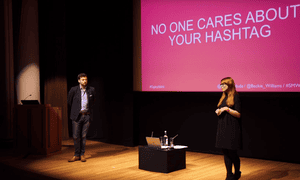
1. What's Happening To Print Journalism?

- The New York Times, Financial Times, and Washington Post conditioned their readers to expect free content, and thus experienced the inevitable grumbling and resistance when the day came that they too had to put a paywall up online.
- Times had lost $74m on the quarter and 40% of its advertising revenue
- It is indeed harder to build in the proliferating world of blogs, tweets, and online competitors than it is for old-line newspapers like the Washington Posts of the world.
- Consumers will "weed out poor quality media and pay for what they value"

- Emojis have been very popular as a lot of people use it on there smart phone through social sites and text messages mostly to show there emotions or feelings or how they are feeling at that particular time
- There were multiple talks covering different aspects of how emojis could be put to use in your next social media campaign.
- Was key topic for Social Media Week which took place in September
- Emoji's described as a "form of expression"
Friday 13 November 2015
Weekly New/Digital Media homework Week 9
WEEK 9
1. Can dropping the paywall and upping the story count boost Sun’s website?
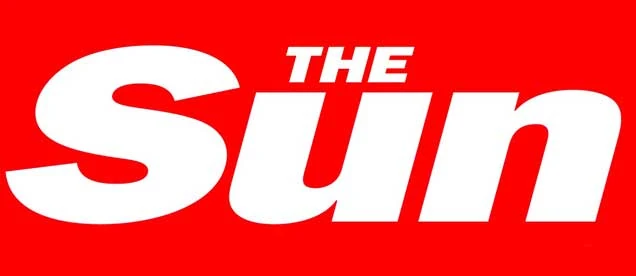
1. Can dropping the paywall and upping the story count boost Sun’s website?

- Paywall introduced in 2013 - "failed to keep stimulating interest"
- The Sun lost many readers
- Subscription fee - £7.99
- Rupert Murdoch, the media mogul previously known for his refusal to give editorial content away free, has bowed to the inevitable by dismantling the Sun’s paywall.
- More journalists are expected to be hired to join the Sun’s digital team and to help boost the quantity of its content.
- In commercial terms, News UK will be hoping that a larger Sun online audience will result in increased digital revenues from advertising.
- Murdoch, changed his mind about the charging for online access, therefore this will be effective in helping The Sun be popular again
- Speaking at a question and answer session in India, Facebook founder says he will find a solution to the problem of annoying game notifications
- Mark Zuckerberg has announced at a question-and-answer session that his team of developers are working on a solution.
- The top-rated comment, with 7,500 likes, in response to Zuckerberg’s call-out for users’ questions before his talk at the the Indian Institute of Technology (IIT) in Delhi was a straight-to-the-point: “I don’t want any more invitations to Candy Crush. How can I stop it?"
Monday 9 November 2015
Marxism and Pluralism
Developments in new/digital media mean that audiences can now have access to a greater variety of views and values. To what extent are audiences empowered by these developments?
However, an alternative view could be that Marxists are in in control and this is clearly evident for online newspaper sites which moderate comments which people leave on each article. In further detail, if audiences express their opinions which are too far out of the mainstream, that comment can easily be removed. This links to how the "elite" (in this case an online newspaper organisation such as The Daily Mail) have the power to remove comments online without hassle. For instance, if users use too much swearing in their comment this will automatically notify the website to remove the comment easily. For instance if somebody was to have an opinion about how the Daily Mail are excessively racist that comment would be removed as the Daily Mail wouldn’t want people to think negatively of their brand.
In my opinion, audiences are empowered by developments to
news and digital media to a large extent as citizen journalism allows audiences
to challenge those in power. For instance, CNN an American news channel has
been portrayed negatively on social media because recently this year CNN and
Facebook hosted the first 2016 Democratic Party presidential debate in Las
Vegas, Nevada. CNN conducted an online poll asking viewers to select which of
the participants they believed won the debate. Despite the fact that the poll
ended with Bernie Sanders holding 75% of the vote, and Hillary Clinton holding
18% of the vote, CNN published several articles declaring Secretary Clinton as
the winner of the debate. Users of Twitter were unhappy with CNN's dishonesty
and stated how CNN purposely tried to "bury Bernie Sanders's victory in an
effort to support Hillary Clinton." This created online debate and as a
result CNN removed the poll from their website. The fact that social media
sparked a big debate demonstrates how new and digital media has allowed
audiences to be powerful as they have the freedom to express their opinion on social
media, ultimately other users, on Twitter for example, can retweet this onto
their page. This can result into the issue becoming a trending topic, such as
the CNN example which was trending with the hashtag #CNN in the United States
for 24 hours. As a result, this leads to people becoming ‘opinion leaders’ on
social media as their view may influence somebody else’s thinking if they are
not already aware of the issue. Audiences have the freedom to challenge audiences and could be described as "rebellion is encapsulated in the internet" which is quoted by Keen and suggests how audiences do have the capabilities to challenge the elite.
However, an alternative view could be that Marxists are in in control and this is clearly evident for online newspaper sites which moderate comments which people leave on each article. In further detail, if audiences express their opinions which are too far out of the mainstream, that comment can easily be removed. This links to how the "elite" (in this case an online newspaper organisation such as The Daily Mail) have the power to remove comments online without hassle. For instance, if users use too much swearing in their comment this will automatically notify the website to remove the comment easily. For instance if somebody was to have an opinion about how the Daily Mail are excessively racist that comment would be removed as the Daily Mail wouldn’t want people to think negatively of their brand.
Although anyone has the ability to express their opinion on
social media there are limitations on what can be viewed to other users. More
significantly, YouTube in an example of a website were audiences can control
what content is being exposed e.g. parents can turn on safe search. However, it
is noticed that audiences are heavily empowered by the developments in
technology as social media helps to expose the opinions of the audience. Even
though websites have some control over what comments can be shown, this control
is minor as audiences have the ability to spark online debates which could
impact those with high control.
Monday 2 November 2015
NDM: Marxism, Pluralism and Hegemony
1) Research the Ian Tomlinson case. What would the
traditional, hegemonic view of the police be in a case like this? How did new
and digital media create a different story? What does the police officer's
subsequent aquittal suggest about the power of new and digital media?
New and digital media creates the ability for citizen
journalism to challenge these views; in particular the statement from the
police stated that there were efforts to "save his (Ian Tomlinson) life
after he collapsed." However, video footage proves that the police's
version of events was not true. From a traditional, hegemonic view, this
particular police case is seen to be standard as police brutality is happening
more often. New and digital media help to enforce this as it proves the police
are abusing the power they have.
2) What does the author argue regarding whether hegemony is
being challenged by Web 2.0?
The author argues that there is less hegemony because
audiences no longer have to rely on traditional media and today audiences can
easily produce texts themselves. Therefore, injustices can be challenged more
easily
3) In your opinion, does new and digital media reinforce
dominant hegemonic views or give the audience a platform to challenge them?
The author argues that the internet is becoming more diverse
as there are more "amateur" and "professional"
opinions/viewpoints available. As audiences are challenging more, there is less
hegemony.Thursday 29 October 2015
NDM: News values
Galtung and Ruge
How has new and digital media technology changed Galtung and Ruge’s news values?
How would you update them for 2015?
Immediacy is vital as social media sites such as Facebook, Twitter and Snapchat have the ability to report breaking news on the users timelines at any given time. However, content is most likely to be a source of citizen journalism and might not be completely accurate.
Familiarity is useful is Twitter in particular as anyone can adjust their trending topics to the city they are currently living in. From that, news stories will be trending in line with the location the news is from.
Amplitude is convenient as large audiences can use online newspapers such as The Daily Mail, which is popular in numerous countries.
Frequency: the internet allows citizen journalists to have no limit of articles they want to post, even for newspapers although they report main news stories once
Unambiguity: especially with citizen journalism, some of the information can be unclear (due to audio problems for instance)
Predictability: in some instances news can be predicted. The London riots is a prime example of this, as social media promoted it and caused a big manic.
Surprise: for instance, celebrity stories in "the sidebar of shame" is usually exaggerated or unexpected. Online newspapers, such as The Daily Mail, are responsible for this.
Continuity: if online newspaper accounts, especially on Twitter tweet articles and this generates discussion then automatically it's interpreted as news.
Elite nations and people: some stories which were front-page newspaper covers few years back might not be the front of online newspapers today. This is because audiences are more infatuated with celebrities.
Negativity: people have the ability on social media to freely express their opinion. With celebrities, who are seen as opinion leaders, can change views of people to think different of events in the news.
Balance: this is vital, for instance many stories about government scandals may be exposed near election time.
How has new and digital media technology changed Galtung and Ruge’s news values?
How would you update them for 2015?
Familiarity is useful is Twitter in particular as anyone can adjust their trending topics to the city they are currently living in. From that, news stories will be trending in line with the location the news is from.
Amplitude is convenient as large audiences can use online newspapers such as The Daily Mail, which is popular in numerous countries.
Frequency: the internet allows citizen journalists to have no limit of articles they want to post, even for newspapers although they report main news stories once
Unambiguity: especially with citizen journalism, some of the information can be unclear (due to audio problems for instance)
Predictability: in some instances news can be predicted. The London riots is a prime example of this, as social media promoted it and caused a big manic.
Surprise: for instance, celebrity stories in "the sidebar of shame" is usually exaggerated or unexpected. Online newspapers, such as The Daily Mail, are responsible for this.
Continuity: if online newspaper accounts, especially on Twitter tweet articles and this generates discussion then automatically it's interpreted as news.
Elite nations and people: some stories which were front-page newspaper covers few years back might not be the front of online newspapers today. This is because audiences are more infatuated with celebrities.
Negativity: people have the ability on social media to freely express their opinion. With celebrities, who are seen as opinion leaders, can change views of people to think different of events in the news.
Balance: this is vital, for instance many stories about government scandals may be exposed near election time.
Thursday 22 October 2015
Questions for Fran Unsworth
- Did all reporters at the BBC attend a private school?
- How do you manage your roles and responsibilities on a daily basis?
- In your opinion, do you think the tv license is valid?
Weekly New/Digital Media homework Week 8
WEEK 8
1. YouTube Red subscription to mix music, digital stars and ad-free viewing


1. YouTube Red subscription to mix music, digital stars and ad-free viewing

- YouTube has built its billion-viewer audience on the basis of free, ad-supported videos and a growing roster of digital stars. Now it hopes exclusive shows from some of the latter will persuade people to pay to access the service.
- Google hopes shows from PewDiePie, Lilly Singh and The Fine Brothers will persuade YouTube viewers to pay $9.99 a month for premium access
- It will launch in late October for the US, costing $9.99 a month, before rolling out globally. Besides the exclusive shows, subscribers will be able to watch all YouTube videos without advertising, and download them to their mobile devices for offline viewing.
2. IOS 9.1

- Explosion of 150 more emoji, including rude hand gesture, comes along with UK launch of Apple News and security updates
- The update also brings bug and security fixes, plus a system that detects when you raise and lower your phone when taking Live Photos so shots of the air or feet are minimised. The security fixes, as with all updates, make it worth updating to minimise your risk from hackers.
Friday 16 October 2015
Learner Response
Developments in new/digital media mean that audiences can now have access to a greater variety of views and values. To what extent are audiences empowered by these developments
Learner Response: re-write paragraph on citizen journalism
Furthermore, technology allows anyone with a camera phone to be empowered. This enables people to be a citizen journalist in their own right. A prominent way this is shown is through the police brutality which has most recently taken place, the Michael Brown Ferguson incident is particular. The incident was recorded by a bystander, which clearly shows an unarmed 18-year old being harassed and beaten by police, ultimately led to his death. This footage was leaked onto the internet. This caused uproar instantly on social media and protests began to demonstrate how police brutality will not be accepted in the States. Social media sites, such as Instagram and Twitter played a role is demonstrating how police brutality is an urgent issue which needs to be addressed. For instance, the hashtag "#BlackLivesMatter" was trending worldwide on all social media sites to raise awareness about the issue. This encouraged audiences to challenge authority and question if black lives really do matter. This caused moral panic and became a massive issue only because of the video evidence which surfaced. If the bystander didn't record the beating then authority (such as the police) wouldn't be questioned. The power of the camera phone illustrates how evidence of a police beating can spark violence as protesters returned to the riot-scarred streets of Ferguson, a day after crowds looted businesses and set fire to buildings in a night of rage against a grand jury's decision not to indict the white police officer who killed Michael Brown. As a result, the bystander was arrested and proves how powerful citizen journalism is because the bystander himself was clearly innocent and harmless. However, from the perspective of the police, the definitely despised the fact that the bystander recorded this footage and made this issue of racism more known. The power of camera phones allows audiences to be empowered as they can record an incident and make it a public issue.
Learner Response: re-write paragraph on citizen journalism
Furthermore, technology allows anyone with a camera phone to be empowered. This enables people to be a citizen journalist in their own right. A prominent way this is shown is through the police brutality which has most recently taken place, the Michael Brown Ferguson incident is particular. The incident was recorded by a bystander, which clearly shows an unarmed 18-year old being harassed and beaten by police, ultimately led to his death. This footage was leaked onto the internet. This caused uproar instantly on social media and protests began to demonstrate how police brutality will not be accepted in the States. Social media sites, such as Instagram and Twitter played a role is demonstrating how police brutality is an urgent issue which needs to be addressed. For instance, the hashtag "#BlackLivesMatter" was trending worldwide on all social media sites to raise awareness about the issue. This encouraged audiences to challenge authority and question if black lives really do matter. This caused moral panic and became a massive issue only because of the video evidence which surfaced. If the bystander didn't record the beating then authority (such as the police) wouldn't be questioned. The power of the camera phone illustrates how evidence of a police beating can spark violence as protesters returned to the riot-scarred streets of Ferguson, a day after crowds looted businesses and set fire to buildings in a night of rage against a grand jury's decision not to indict the white police officer who killed Michael Brown. As a result, the bystander was arrested and proves how powerful citizen journalism is because the bystander himself was clearly innocent and harmless. However, from the perspective of the police, the definitely despised the fact that the bystander recorded this footage and made this issue of racism more known. The power of camera phones allows audiences to be empowered as they can record an incident and make it a public issue.
Tuesday 13 October 2015
Weekly New/Digital Media homework Week 7
WEEK 7
1. Twitter’s TV strategy
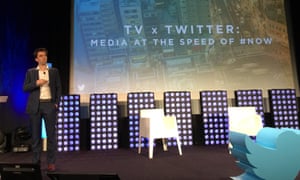
1. Twitter’s TV strategy

- Users of the social networking service are watching 370 years of video a day
- Like Facebook, Twitter is love-bombing the TV industry in the hopes of getting broadcast“It was this sense of where TV used to be seen as a wave where you just sit and it crashes over you for an hour and you’re consumed" and producers to help drive more conversation around their shows on the social networks
- Twitter has become a broadcaster of sorts itself: its 316 million active users currently watch 370 years worth of video every day on the service.
- That’s giving Twitter a better idea of what kind of videos its users like best. “They like shorter clips – 30 to 45 second
2. Call of Duty: Black Ops 3 – five things we've learned about the campaign



- Black Ops 3 is set in 2065 and there have been a major advances in robotic and bionic technology since the Black Ops 2 timeline
- Cooperation is going to be the central focus of the new campaign, with a focus on personal choice and ability rather than run ‘n’ gun action
- Set 40 years after the events of Black Ops 2, the world is now divided into a patchwork of international alliances, all investigating advanced cybernetic and bio-augmentation technologies. The narrative follows a group of robotically enhanced super soldiers, investigating the disappearance of a CIA operative in Singapore, as well as a huge data leak of military secrets.
- During a reveal event in April, developer Treyarch announced that the campaign would be a four-player co-op mode with large, open environments – it even promised a more complex story in which multiple playthroughs may be required to get the full picture.
- Furthmore, each player’s configurations will be based on the decisions they have made throughout their campaign experience: the more you play, the more cybercores, weapon attachments and other pieces of equipment you’re able to unlock and utilise.

Subscribe to:
Posts (Atom)
